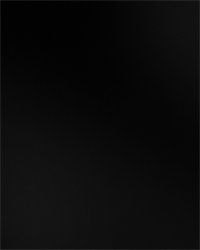I Heart Everything
Photography is a messy word. After Sontag and company’s destruction of photographic objectivity, we were left with only a procedural understanding of photography as an action. The camera was the operative tool in this process, capable of producing visual constructions fueled by the user’s subjectivity. Since then, this definition of photography has been dissolved by a variety of image-producing devices and viewing formats that beg a wider understanding of the word.
A camera is often no longer a device unto itself, but a function among many others. Cell phones, computers, and even Gameboys each come with image-taking options. Scanners, Photoshop, and screen grabs are three of our main sources of photographic material and none of them relies on a lens. Without a definitive tool used to create photographs, the only way to unite this diverse array of instruments is to understand them in terms of what they do instead of what they are. We may say all of them mechanically produce a fixed image, but this is where their similarity ends.
Identifying the form a photograph may present itself through is now correspondingly splintered with the technology used to create it. A photograph may manifest itself in a strip of celluloid film, a digital file, or a projection of light. Once again, there is no specific place photographs must be, just uniformity in what they do when they get there– display a fixed image.
If even the most analog of cameras requires an act of editorial decision making, digital manipulation must also make an image no less a photograph. There is no quantifiable threshold of alteration a photograph must pass to no longer be considered such. The first subjective decision made during the process of creating an image opens a Pandora’s box of other possible degrees of manipulation. There’s no going back; the most radically changed and the least altered photo both exist within the same continuum of their author’s choice-making.
Without a device, resulting form or methodology (objectivity) to separate any other mechanically produced visual image from today’s photograph, the word ‘photograph’ as a descriptor should be consumed by the more encompassing of the two words: image. Even the light-referencing etymology of photograph (fotos) is outmoded for all the methods that lenslessly employ 1’s and 0’s instead of the sun’s rays to create fixed images.
It’s tempting to ignore these fussy semantic contradictions and continue to use the word ‘photograph’ as an informal category nonetheless. But as feminist writer Jo Freeman states in her essay The Tyranny of Structurelessness
"Structurelessness becomes a way of masking power, and [it] is usually most strongly advocated by those who are most powerful (whether they are conscious of it or not). As long as the structure of the [grouping] is informal, the rules of how decisions are made are known only to a few and awareness of power is limited to those who know the rules."
On the internet, where fine art photography blogs are common, this criticism holds much weight. It is through the continued descriptive use of ‘photography’ that these blogs are able to mobilize and cultivate shared standards for their audience’s understanding of the word and the art that corresponds with it. Many of the most widely read of these blogs maintain a conservative and narrow focus on traditional ‘photographic’ methods (ex: film cameras), archaic distribution models (ex: limited edition books) and long-established formal conventions (ex: portraiture). By so heavily influencing the ‘photographic’ discourse, these blogs do a disservice to artists who create images in the expanded field of image production and limit their readership’s understanding of this expansion.
In the process, meaningless encampments have been set up between ‘internet art’ and ‘photography’. It is only through an informal, instead of rigorous, definition of the word ‘photography’ that these groupings may even come to exist. Of course, any blog is free to focus on whatever limited scope of creation its author takes interest in. But such an author would be wrong to describe her site as a contemporary reflection of art– a field so full of medium cross-pollination any attempt to restrict focus to a single tool (be it a camera, a paint brush or Maya) would be to censor that work’s relation to all other art created with a different tool but with similar conceptual concerns.
The irony of this situation is that many of the artists and blogs who the ‘photography camp’ celebrates have achieved success entirely from their internet presence. Shane Lavalette is as much an internet artist as Timur Si-Qin is indebted to photographic history. At its best, I Heart Photograph features artists who engage the slippages of ‘classical photography’ with other art forms and technologies, demonstrating the interweaving of disparate techniques so integral to contemporary art. However, the relationship between image making and art as a whole runs much deeper than formal tendencies.
As a work of art is disseminated through culture, it assumes many forms of media. A famous sculpture may exist to the public as a textual description, a critical review, an idea shared verbally, a printed image and/or a reblogged .jpeg file. Together, this network of documentation shapes our overall perception of an artwork, a cumulative process similar to what theorist Paul Virilio calls a ‘trajective’. Through distribution, each of these separate forms of documentation takes their own life. A magazine printed image of the Mona Lisa is as much independent as it is indebted to the original painting. This is where image making reaches its broadest implications, when considered not only as a medium of artistic production but also as a ubiquitous vehicle for practically all forms of art’s media exposure. By priding themselves on a limited scope of formal and historical concerns, the common ‘photography-camp’ bloggers lose site of just why their beloved medium is so important today.




























